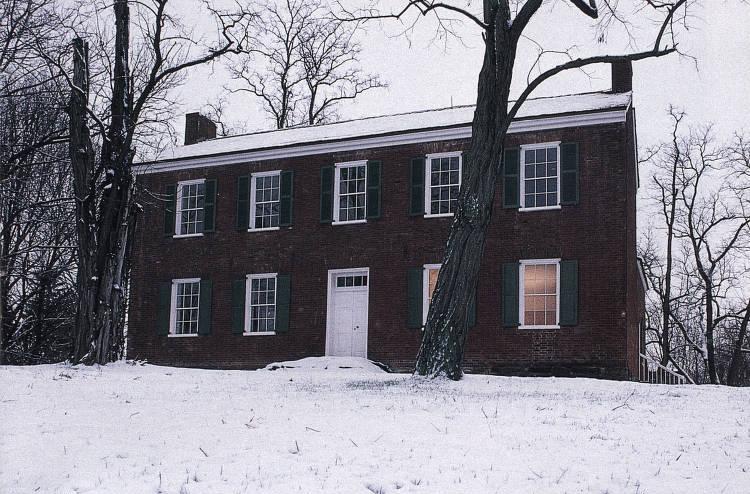
Photo info ...
Credit: Conner PrairieView Source
(Dec. 10, 1777-Aug. 28, 1855). Born in the Moravian missionary village of Lichtenau in present-day Ohio, Conner and his family were removed by British troops to Detroit where they spent the latter years of the American Revolution. After the war, he and his brother John (1775-1826) entered the profitable fur trade in Michigan.

In October 1800, the brothers moved to Indiana Territory and established a trading post among the Delaware tribes located along the west fork of south of present-day . Here William met Mekinges, daughter of Chief William Anderson, leader of the Unalatchgo Lenape people. The pair married in 1802 and went on to have six children. He soon began shipping furs to John’s new trading post near Cedar Grove in the Whitewater River Valley of southeastern Indiana.
Territorial governor William Henry Harrison employed the Conner brothers as scouts and interpreters during the War of 1812. William accompanied Harrison at the Battle of the Thames (1813), where he allegedly identified the body of the great chief Tecumseh. He later served as a witness and/or interpreter at seven Indian treaty negotiations.
Two years after the Treaty of St. Mary’s, Ohio (October 1818), Conner’s wife and six children were removed from central Indiana, along with the Delaware and other tribes. The Treaty effectively moved the northern boundary of Indiana from near the Ohio River to the Wabash River in the northwest and the north and continued the process of Indian removals that had begun with the Treaty of Greenville in 1795. Following the removal of Mekinges and the children, Conner married 18-year-old Elizabeth Chapman. They had 10 children over the next 25 years.
Conner was a leading figure in pioneer central Indiana. The commissioners who selected Indianapolis for the state capital in 1820 convened first at his trading post. In 1823, Conner built a two-story Federal-style brick house overlooking his 1,000-acre farm along White River, which became the first seat of government and the first mail stop in newly established . When Conner moved to Noblesville in 1837, he owned over 4,000 acres of land throughout the county. stands on Conner property.
Conner held several county offices and served three non-consecutive terms in the Indiana General Assembly but devoted greater energies to his commercial ventures. He invested in general stores, mills, and artisans’ shops in Indianapolis and other nearby towns and served as a subscription agent for the proposed Lawrenceburgh & Indianapolis Railroad in 1834. Conner speculated in land, including properties in Indianapolis, and platted the towns of Noblesville and Strawtown in Hamilton County, and Alexandria in Madison County.
After William’s death in 1855, Elizabeth moved to Indianapolis in 1864 where she resided at 472 North East Street until her death in 1892.

Help improve this entry
Contribute information, offer corrections, suggest images.
You can also recommend new entries related to this topic.